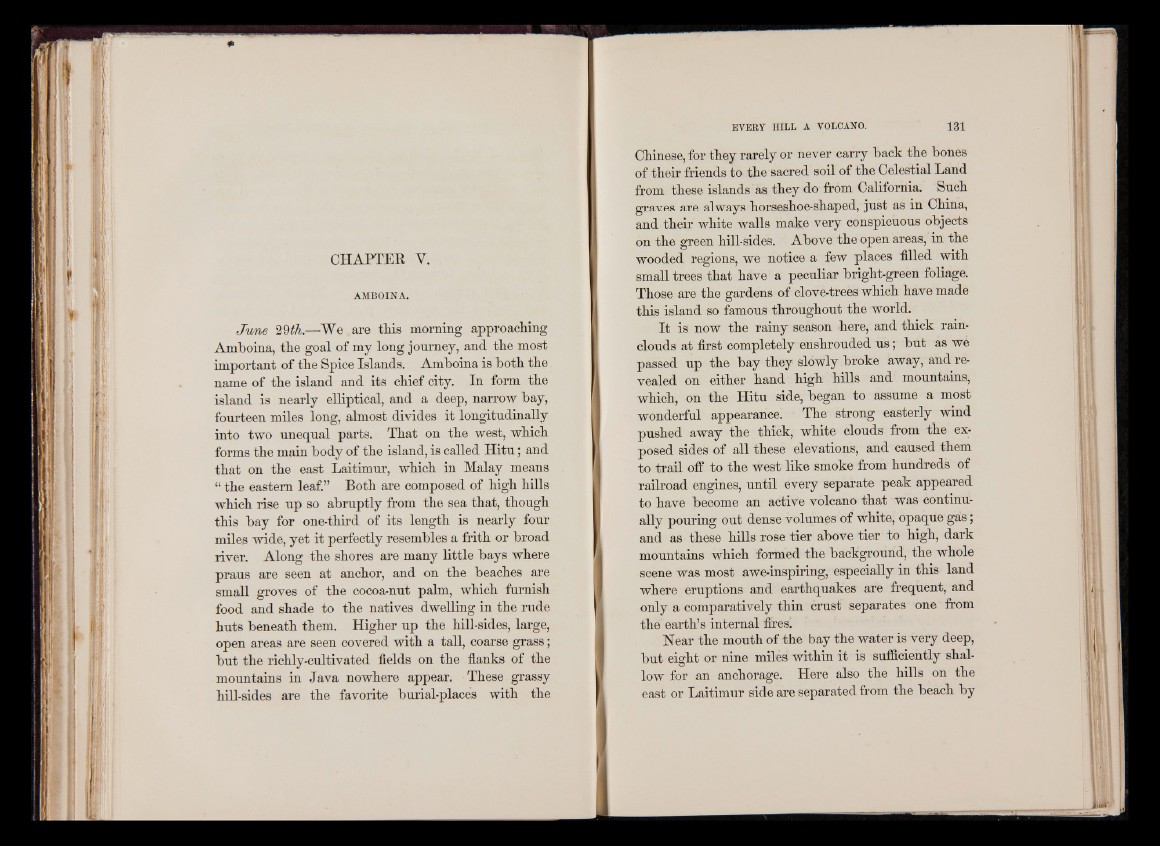
CHAPTER V.
AMBOINA.
June 29th.—We are this morning approaching
Amboina, the goal of my long journey, and the most
important of the Spice Islands. Amhoina is both the
name of the island and its chief city. In form the
island is nearly elliptical, and a deep, narrow hay,
fourteen miles long, almost divides it longitudinally
into two unequal parts. That on the west, which
forms the main body of the island, is called H itu ; and
that on the east Laitimur, which in Malay means
“ the eastern leaf.” Both are composed of high hills
which rise up so abruptly from the sea that, though
this bay for one-third of its length is nearly four
miles wide, yet it perfectly resembles a frith or broad
river. Along the shores are many little bays where
praus are seen at anchor, and on the beaches are
small groves of the cocoa-nut palm, which furnish
food and shade to the natives dwelling in the rude
huts beneath them. Higher up the hill-sides, large,
open areas are seen covered with a tall, coarse grass;
but the richly-cultivated fields on the flanks of the
mountains in Java nowhere appear. These grassy
hill-sides are the favorite burial-places with the
Chinese, for they rarely or never carry back the bones
of their friends to the sacred soil of the Celestial Land
from these islands as they do from California. Such
graves are always horseshoe-shaped, just as in China,
and their white walls make very conspicuous objects
on the green hill-sides. Above the open areas, in the
wooded regions, we notice a few places filled with
sm a ll trees that have a peculiar bright-green foliage.
Those are the gardens of clove-trees which have made
ibis island so famous throughout the world.
It is now the rainy season here, and thick rain-
clouds at first completely enshrouded u s ; but as we
passed up the bay they slowly broke away, and revealed
on either hand high hills and mountains,
which, on the Hitu side, began to assume a most
wonderful appearance. The strong easterly wind
pushed away the thick, white clouds from the exposed
sides of all these elevations, and caused them
to trail off to the west like smoke from hundreds of
railroad engines, until every separate peak appeared
to have become an active volcano that was continually
pouring out dense volumes of white, opaque gas;
and as these hills rose tier above tier to high, dark
mountains which formed the background, the whole
scene was most awe-inspiring, especially in this land
where eruptions and earthquakes are frequent, and
only a comparatively thin crust separates one from
the earth’s internal fires.
Near the mouth of the bay the water is very deep,
but eight or nine miles within it is sufficiently shallow
for an anchorage. Here also the hills on the
east or Laitimur side are separated from the beach by